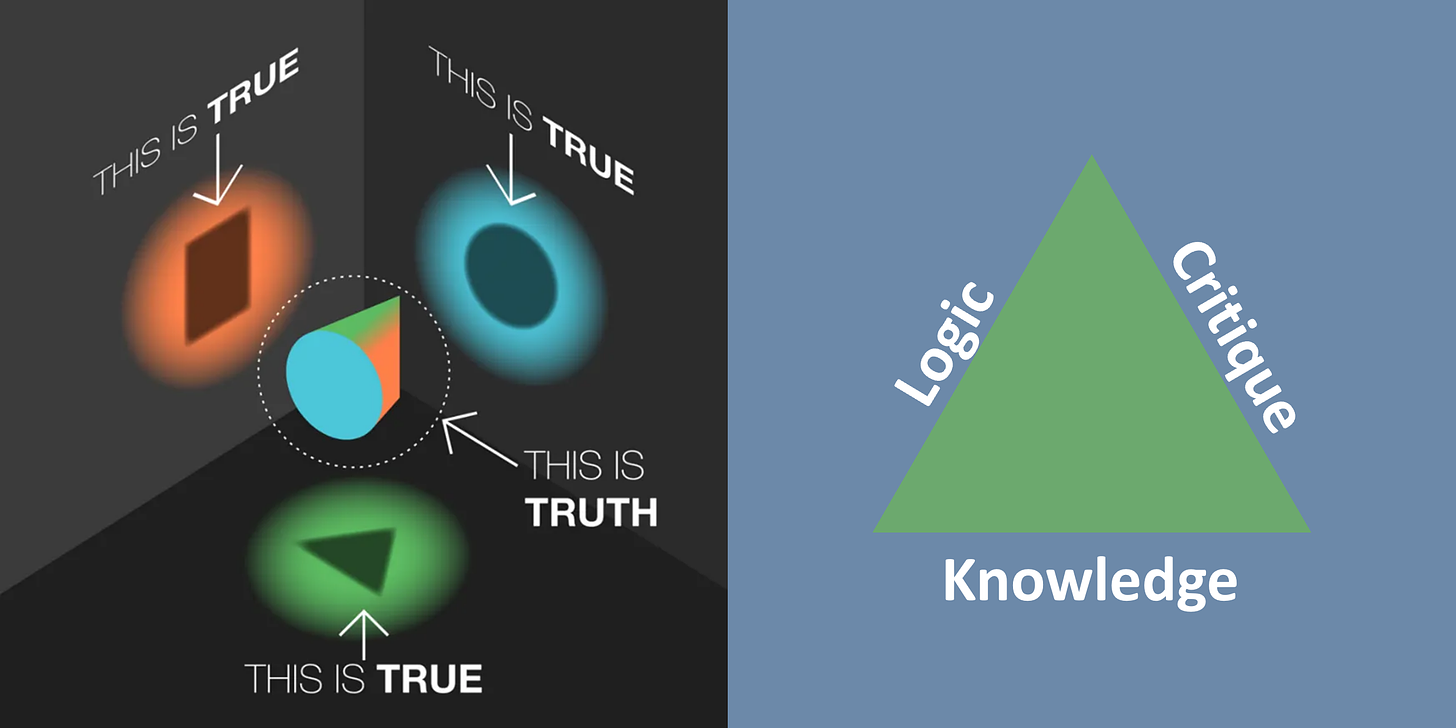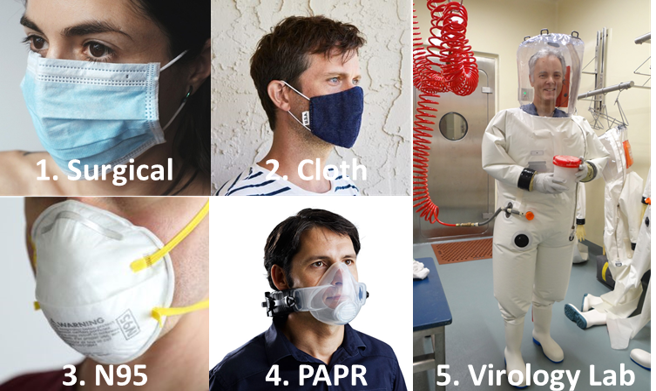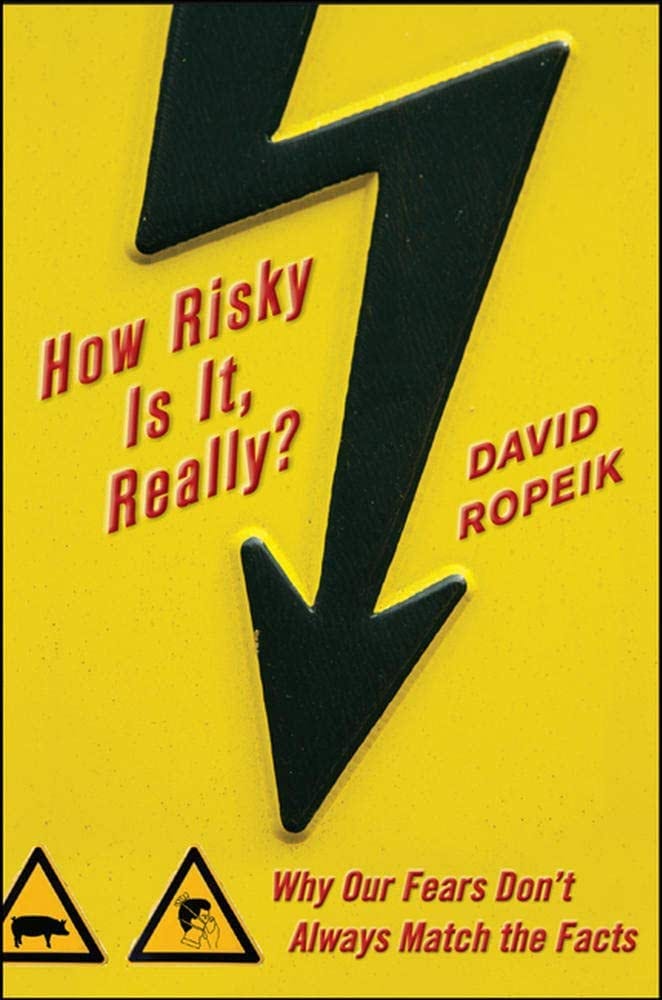Masking is both a horrible, new normal phrase and a controversial topic. It was clear from quite early on that masks made little, if any difference, to the spread of Covid. However, the face nappies got politicised, resulting in strong opinions on every side. Even the behavioural scientists admitted (in the small print) that they didn’t work but, as was obvious to those paying attention, they were used as a psychological tool to divide people and create perpetual fear.
But of course masks work. I wear a mask when removing asbestos or cutting MDF. I wear a mask if there is the potential to inhale gases or chemicals. I would wear a mask if I was a fireman entering a burning building. I would wear a mask if fencing. I would wear a mask to make my skin lovely and soft (actually I wouldn’t, that was just added for comical effect - well maybe I would, once in a while). And I would certainly wear a mask if I was working with hazardous substances or biological agents.
The key is wearing the correct mask for the specific situation, advice that was completely ignored during the pandemic which almost certainly made things much worse. All arguments need nuance, something that has been severely lacking for quite some time.
commented on my post about masks in Boston the other day, which led to me reading his post on masks. It is a fascinating article on an inflammatory subject and is reproduced below with Michael’s permission.I like how he compares masks with seatbelts because they were often used by mask fanatics to try to persuade people to wear a mask “you wear a seatbelt don’t you, then why don’t you wear a mask”.
I also like this diagram he uses in another post which explains how everyone can think they are right whilst thinking that everyone else must be wrong. “Ironically, the true shape in the meme below is a wedge and that is exactly what is dividing the two sides of the debate”.

tldr: Michael argues that a lack of nuanced understanding of how masks work, which types are effective in different situations, and the psychology surrounding their use led to increased deaths in the US. The piece compares masks to seatbelts, with varying types suitable for specific situations and requires proper usage. It highlights that using masks improperly or using the wrong type of mask for a situation can be harmful, just like using the wrong type of seatbelt. The psychology of masks usage and risk compensation, where a false sense of security leads to riskier behaviour, also played a significant role in mismanaging the pandemic. Therefore, a more nuanced approach and understanding of masks were needed for better population-level outcomes.
Today's topic has the singular goal of saving lives and when it comes to the past three years’ debates on masks, this requires a much more complex systems analysis than we’ve been offered. We’ll investigate what we missed in the binary debate on whether masks work or not and uncover the truth of how the science of masks, mask protocols, and our own psychology actually led to increased deaths in the US population. I want to clarify that I fully understand and appreciate the contentiousness of this discussion. I think it is critical to set aside our biases as we dig in so that next time, we can save more lives.
Introduction
The New York Times, not exactly the classic purveyor of this type of information, recently released an article titled The Mask Mandates Did Nothing. Will Any Lessons Be Learned? in which they shared:
The most rigorous and comprehensive analysis of scientific studies conducted on the efficacy of masks for reducing the spread of respiratory illnesses — including Covid-19 — was published late last month. Its conclusions, said Tom Jefferson, the Oxford epidemiologist who is its lead author, were unambiguous.
“There is just no evidence that they” — masks — “make any difference,” “Full stop.”
While this might appear shocking, nigh heresy, in certain circles, to those of us who were studying the full system analysis on the topic it’s exactly as expected. The study goes on to clarify:
[T]he analysis does not prove that proper masks, properly worn, had no benefit at an individual level…
But when it comes to the population-level benefits of masking, the verdict is in: Mask mandates were a bust. (emphasis mine)
This is precisely what I had written about in early 2020 and formalized in a series of long-form Facebook posts in the summer of that year namely Masks do work! However because we couldn’t have the nuanced discussion about HOW masks work, and which masks work in which situations, we failed to achieve the Population-level benefits. This actually put more people at risk, while hobbling those that didn’t need them, and devolved the conversation to moral and political posturing helping no one.
This position put me in quite a bind in discussions as I got caught between both sides in what Eric Weinstein called the Quantum Superposition Problem where everything was forced into a false binary. To be clear, COVID was and is a wicked multi-variate problem where you should immediately flag any conversation that falls into a binary and nothing exemplifies this better than the masks.
The Science of Masks
Of course, masks work! They work like seatbelts. Few rational people would argue that seatbelts don’t work. But we very quickly recognize that seat belts, like masks, come in a lot of varieties and uses.
Lap belts - work well with tractors, certain UTVs, and slower-moving vehicles.
3-point seatbelts - standard in cars with moderate speeds and driving conditions
5-point harness: used in kids’ car seats and modest racing harnesses
6-point harness: one step up from 5-point, typically paired with a helmet
HANS + 6 Point + Roll cage: used in NASCAR and F1 racing
Masks have a similar ranking:
Surgical masks: designed to prevent droplet contamination of open wounds. They are a liquid, not a vapor barrier. Critical to recognize is that surgical masks are used to avoid bacterial, not viral contamination (HEPA air filtration handles viral risk). The Center for Disease Control (CDC) does not recommend using surgical masks for viral prevention.
Cloth masks: Slightly better than surgical but highly unregulated. A good proxy may be the PM2.5 mask which has 2 cloth layers and a carbon filter that handles down to 2.5 microns. Viruses range in size from 0.02 to 0.25 microns and COVID-19 is 0.125 microns or 20x smaller than what the PM2.5 can filter. A dozen studies demonstrate effectively a null benefit in cloth masks preventing influenza transfer and therefore are only recommended for emergency use and are not to be worn constantly or as a replacement to a true virus mask as PPE.
N95 masks: Designed to filter down to 0.3 microns. These work very well for bacteria as they are about 0.4 microns in diameter. What this means is that COVID is still 2.4x smaller than what an N95 is designed to filter.
Powered Air Purifying Respirator (PAPR) masks: HEPA-filtered air with a rubber seal work very well for filtering viruses for the wearer but typically does not filter the exhaled air.
Level 4 Virology Lab equipment: This is what members of the Wuhan lab would have worn to work with their coronavirus. This is clearly what the experts believe works to stop a virus. They look like a space suit with positive pressure to ensure viruses cannot enter.
Each level of seatbelt or mask works for certain things and doesn’t work for others. Also, like seatbelts, masks are not used only by themselves. A lap belt in a tractor also has a roll bar. A 6-point harness typically comes paired with a roll-cage and helmets. Even our ubiquitous 3-point harnesses are coupled with airbags, crumple zones, and other safety mechanisms in our cars. Similarly, a surgical mask is paired with a filtered ventilation system that draws the air up, and away from the patient, and other masks come with clear guidance of time, proximity, and human density.
A seatbelt also must be the right material and used properly. Yes, a rope, tied to three points, can help but it also comes with its own risk. Not wearing or sizing a seatbelt properly can result in injury. You must have the proper material AND use it correctly to achieve the level of safety. What became very clear with the masks during COVID was that they required protocols that simply, were not followed. For a cloth mask to have any effectiveness, it needed the following protocol:
Wear no longer than 1 hr before exchanging
Properly fitted and worn; it should restrict airflow
Proper donning and doffing (sanitizing, disposal, etc.)
Used in public areas that are not high density and avoid enclosed rooms
The fact that cloth masks rarely achieved even the first two means we had a limited individual benefit let alone any population benefit.
What’s the risk you ask? Simply put, fluid dynamics. Because if you were an infected person, wearing a mask in public, you are collecting a droplet-borne virus in the mask creating a super concentration of viral load. Exhaling, touching, or heaven forbid, coughing, created the aerosolization that made the virus more contagious with each emission carrying a higher concentration of the virus.
The inverse is also true. Wearing a cloth mask and being exposed means the virus may not pass through the mask immediately, but it will build up in concentration in the mask as you inhale, and because the mask does not filter properly, it will pass through a higher viral load. This wasn’t new information at the time as pre-pandemic studies demonstrated little or no benefit from wearing paper or cloth masks in preventing the spread of respiratory illnesses. Yet we were unable to have conversations about the science and the nuanced pros/cons and risks associated with the masks and this was driven not by the science of virology but the science of psychology.
The Psychology of Masks
In the early days of the pandemic, I had a conversation where, when questioning the effectiveness of cloth masks, I was told: “You be sure to let your doctor know not to wear a mask if you are ever in surgery”. How on earth does questioning the effectiveness of a cloth mask for a virus equate to a surgical mask to prevent wound contamination? That’s like saying because I question the use of a 3-point harness in NASCAR means I shouldn’t use a seatbelt on a tractor. It’s absurd.
Let’s put this back into perspective. People advocating for the use of any mask to stop COVID because “masks work!” are akin to a person putting an infant in a lap belt because “seatbelts work!” and then driving 90 mph, weaving through traffic, and texting about those assholes who point out that this isn’t smart.
We know putting an infant in a lap belt is absurd. It isn’t because seatbelts don’t work. It’s because we recognize the capabilities, limitations, and unique human considerations of seatbelts. We now use infant car seats with 5-point harnesses and even have them backward-facing. We even have protocols for how to handle cold weather clothing and continue to evolve the design with side impact improvements, etc., etc. We know that, while seat belts do work, there are different seatbelts and safety accessories for different uses.
Knowing this, we can honestly say that a lap belt on an infant won’t work as you are intending! Just the same that we can say a surgical mask, designed to avoid bacterial contamination through droplets, won’t work to prevent viral distribution through aerosols and that a cloth mask may result in more transmission through improper wear, the concentration of the virus, and risk compensation. This is why the NYT story is right, there were zero population-level benefits due to this problem
This last part is one of the most important and in the fantastic book “How Risky is it Really,” the author, David Ropeik, covers risk compensation and how it counterintuitively increases the actual risk we face. A classic example of this psychological phenomenon was originally documented with seatbelts, where with better seatbelt technology, the more confident people felt in driving, resulting in higher speed impacts, significantly reducing the intended benefits.
With masks, the binary “masks work” led to incredibly dangerous risk compensation where vulnerable people, instead of isolating, improperly wore a mask while running daily errands around town. It also led people who might be contagious to risk a quick run to the store because both felt like they were protecting others yet instead, dramatically increased their actual probability of infecting.
A prime example is when I wore a mask people didn’t respect social distancing. They’d stand right next to me, or walk right by. However, when I didn’t wear a mask they give me more than the prescribed six feet. Personally, I didn’t wear a mask when not mandated, I maintained social distancing, and was intentional and deliberate about where, when, and how often I went out. Which was safer? Well, the science is clear, my more nuanced approach was dramatically safer than suffering risk compensation while wearing a paper mask and ignoring the clear comorbidity risks associated with COVID-19.
The manifestation of the psychology in question was best captured in a Facebook discussion on masking where a person responded: “So you won’t do the bare minimum to make others feel more comfortable and instead remain a pariah for little personal benefit?”
In a now-deleted thread, this same person also said: “Why are you trying to take away the one thing we can do to help?” Both of these demonstrate the allure of masks as a way to feel like they could do something, anything, in the face of dramatic uncertainty. I totally understand this response and that’s a large part of the problem. Because if wearing the mask makes people feel comfortable, and makes them feel like they’re doing something, yet actually causes more people to die, then yes, I’d rather they be uncomfortable, and I will be a pariah because this is risk compensation.
Simply put, by making it into a false binary without the nuance of the risks, mask types, and proper wearing procedure, we willfully exposed vulnerable people to a degree that significantly increased their risk of death. It was the exact opposite of the goal, but by ignoring the systems perspective and shutting down the conversation, we failed at protecting those who needed it most, and more people died.
What was the Actual Risk?
In early February 2020, just as news started to emerge from China about COVID, I attended a Defense Threat Reduction Agency Threatcasting event involving cyber and information operations implications to weapons of mass destruction. My team focused on biological warfare. My sub-team included an epidemiologist, a psychologist, a gray hacker, and me, the cyber and information operations analyst.
We analyzed how you could use cyber and information operations to release bioweapons, including viruses. What became obvious very quickly was that releasing a virus isn’t what adversaries would probably want to do because they can’t control it. What we found to be incredibly effective was to release something, enough to measure, and then use information operations to trigger a societal auto-immune response.
What is a societal auto-immune response? Think of it as an overreaction to a relatively benign threat. Just like the immune system has auto-immune responses, so too does society. Our team mapped out the patterns that the Russian troll farms, China, et. al. used in 2016 with their social media campaigns, and then looked at how we could replicate it. We used the psychology identified in How Risky is it Really to illuminate potential attack vectors. We derived dozens of scenarios that could result in a small but real threat being exacerbated into social and political division, economic instability, and loss of international standing.
Fast forward to the middle of 2020 and beyond, and we’ve seen this exact scenario play out. I don’t know if it was intentional, and it is unnecessary to make claims of malice because, either way, we clearly demonstrated that the idea of a societal auto-immune response is real. The topic of masks clearly highlights just one counterintuitive problem where the loss of the systems perspective and the myopic focus on a false binary caused substantially more damage via the virus. Furthermore our response created negative impacts to education, and the economy and further exacerbated the bifurcation of our citizenry into even more polarized positions.
In Summary:
There’s another great quote from that NYT article I feel is appropriate to share:
“When people say they “trust the science,” what they presumably mean is that science is rational, empirical, rigorous, receptive to new information, sensitive to competing concerns and risks. Also: humble, transparent, open to criticism, honest about what it doesn’t know, willing to admit error.”
This is a perfect encapsulation of how I’ve attempted to address the situation over the past three years. When COVID was first on the horizon, as a Polymath, I read everything I could find on virology, psychology, fluid mechanics, and medicine in an attempt to identify the right path to protect my family. It didn’t take long to realize neither side was applying any form of systems analysis and were especially missing what we captured as; “Systems thinking is insatiable curiosity, a heavy dose of humility that we may not know the real problem, coupled with an intentional reframing of the problems.”
Because of this non-binary stance, avoiding that quantum superposition problem, I’ve been harangued by both the political left, and right because I dare to say that masks do work, but not the way we were told. It’s a frustrating place to be because my goal is to save lives, and neither of those false binaries came close to that goal. If we instead understood the individual nuances of masks, wearing protocols, and comorbidity health risks at the individual level, we would have had a much-improved population-level impact, and this is where we would have saved many more lives.









It was obvious by watching the public for 5 minutes that even if masks COULD be effective in theory, they were never going to be effective in practice, because everybody is CONSTANTLY fiddling with the mask. (Then going back to playing on their phones.)
And IF masks actually "worked" as advertised, there would be some sort of standard for what counts as a mask and what's just a "face covering". Yet in the vast majority of the US, an old t-shirt is the same as a fitted N95.
Just another reason we know it was all theater and not about science.
Three years into this and we still don't know if there was a virus, to what extent it actually spread, and we are still talking about jabs bad and masks.
The Op continues. The Greatest Psy Op in history rolls on.